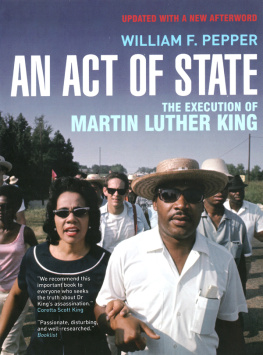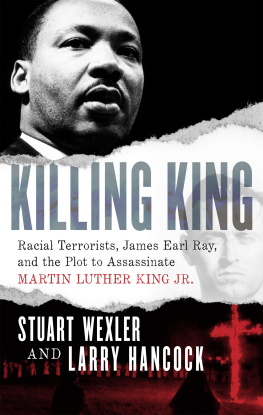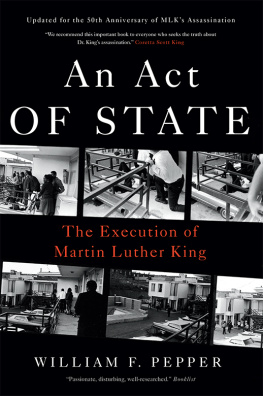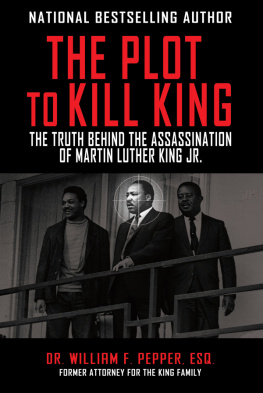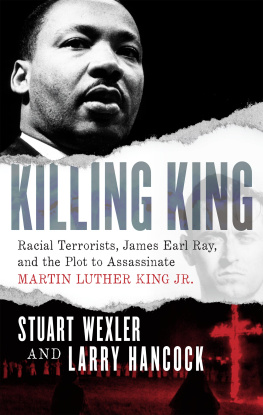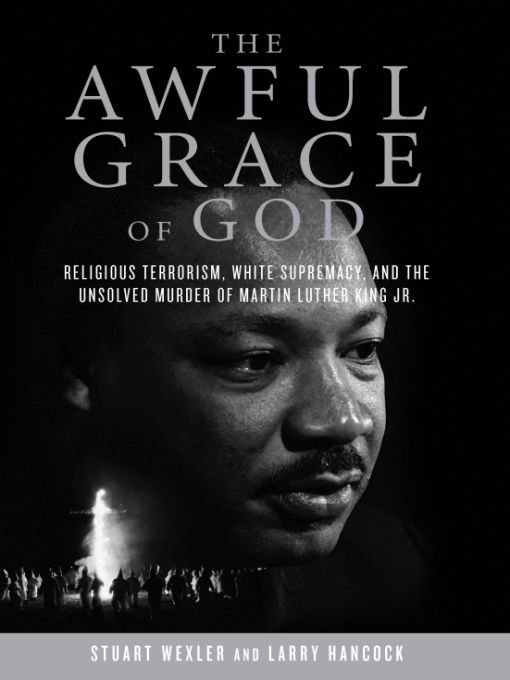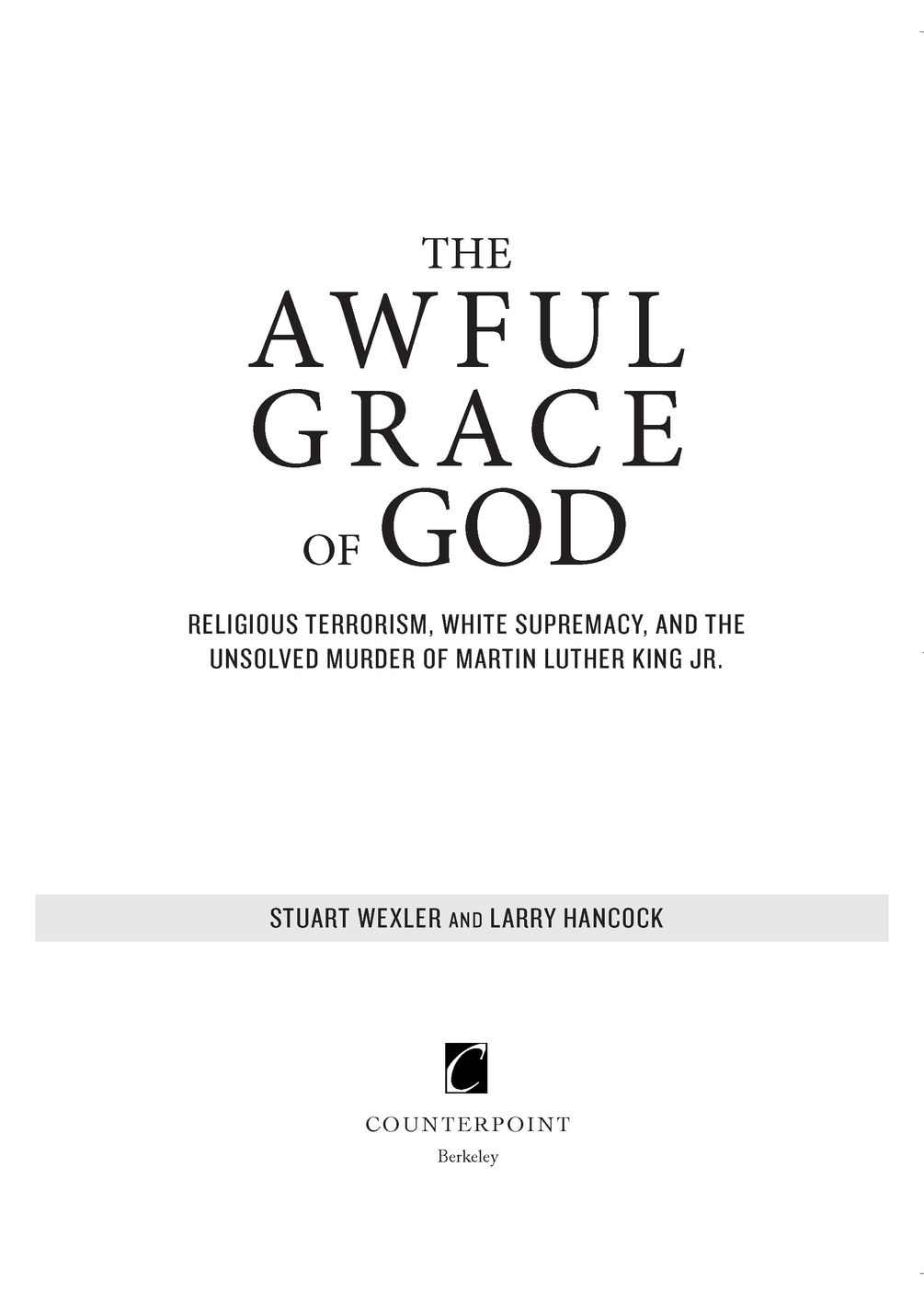Table of Contents
We dedicate this work to the Reverend Edwin King. His courage and open mindedness in revisiting the most painful periods of his life, involving violence against him and the murders of his colleagues and friends as they fought for basic human rights, has continually inspired our search for the truth in the murder of Martin Luther King, Jr.
FOREWORD
During the mid-1990s, while teaching at Hood College, I happened to live only four minutes away from Harold Weisberg, one of the best-known citizen critics of the Warren Commission and giant in the studies of the both the Kennedy and King assassinations. Weisberg had used his legal skills and the Freedom of Information Act to amass a huge document collection, containing some ninety thousand pages of King case files. For a time he served as James Earl Rays investigator and eventually published his own book on the King assassination.
It was Harold who suggested that I undertake a study of Dr. Kings Poor Peoples Campaign and he gave me free access to the FBI files housed in his basement. I was excited about pursuing a topic that involved a tragic episode in the civil rights movement and I submitted my own Freedom of Information Act (FOIA) request on POCAM (the FBIs designated name for the Poor Peoples March) to the Justice Department. Justice responded to my request as if I had committed lese majestyeffectively questioning whether I was in the grip of some fantasy life that somehow entitled me access to government documents. The Department of Justices FOIA section effectively told me to either take a hike or get a lawyer.
Well, I did get a FOIA lawyer and sued for access to the POCAM files. The Friday before the Monday when my case was scheduled for a hearing, Justice capitulatedleaving me with several thousand dollars in lawyers fees, the money I had planned to use to gain access to the FBIs field office documents which I needed to tell the full story of the Poor Peoples Campaign. I felt gratified that I had won the battle with Justice, but disappointed because I would be unable to write the most complete story of Dr. Kings final project.
I mention this in detail because I can appreciate the effort that the authors of this book put into their work, which is also heavily based in government files. I am also concerned that the entire Freedom of Information Act is under the political gun and that constant government invocations of State Secrets is effectively gutting that law and destroying the government transparency it was supposed to produce.
Given my own studies on him, I would recommend that anyone with an interest in the assassination of Dr. Martin Luther King Jr. should have a copy of this work in their library. Wexler and Hancocks book is a major work, grounded in impressive research.
The Awful Grace of God opens by reminding us of exactly what happened in America with the onset of the civil rights movement of the 1950s and 1960s and moves through that period with a focus on violence targeting Dr. King, who had emerged as the symbol of peaceful protest.
Wexler and Hancock demonstrate that officialdom missed the ominous, larger picture in its investigation into the King murder. It failed to deal with the implications of a movement of ideological terrorists who had been waging a campaign of violence, a targeted campaign of bombings and shootings calculated to ignite a state of chaos which would force harsh, repressive measures by the government and in the end actual race war. The ultimate goal of the campaign was to be the literal extermination of both the black race and their alleged enablersthe Jews.
The National States Rights Party, the White Knights of the Ku Klux Klan of Mississippi, and affiliated leaders of the Christian Identity religious movement were all linked in a plan to ignite a racial Armageddon. In furthering their effort toward a race war, these extremist elements were involved with a series of murder contracts on Dr. King. By 1967, the price on Dr. Kings head was up to $100,000 in some offers and news of the bounty was circulating through a number of federal prisons.
Wexler and Hancock make a persuasive argument that James Earl Ray first heard talk of such a bounty while in the Jefferson City prison and that eventually, after months of being on the run and pursuing other options (including fleeing overseas) in Canada, Mexico and the United States, was recruited into a plot against Dr. King when his options and money began to run out in Los Angeles.
The Awful Grace of God presents the view that James Earl Ray was aware of and involved to some extent in the conspiracy against Dr. King. The authors do not pretend to fully resolve Rays actual role, while considering arguments both for and against his possible act as Dr. Kings killer. They also present evidence suggesting that Ray did not go to Memphis knowingly planning to kill Dr. King himself and that a different plan and a different patsy were actually in play.
In addition, what the authors do with consummate skill is to dismiss the diversion of Raoul, a mysterious figure introduced by Ray himself, by making a convincing case that Raoul was Rays own creation, intended to divert guilt from himself as well as from the actual individuals behind the attack. In addition to their examination of Raoul the authors also address the allegation that Kings murder was the work of elements of the American governmenta conspiracy presented in King assassination literature as an alliance of the CIA, and a collection of secret, highly covert military intelligence groupswith the actual assassination alleged to have been performed by or coordinated by military personnel observed and reported in Memphis on the day of the murder.
In March of 1979, the House Select Committee on Assassinations released its report on President Kennedys and Dr. Kings assassinations. The report, submitted to Congress, concluded that the committee found evidence of conspiracy in both cases. The committee requested the Justice Department to accept its findings and open its own investigation. Neither Congress nor the Justice Department chose to act on the committees findings and recommendations.
The Awful Grace of God is a major contribution by private citizens to throw light on the still-unresolved and paramount issue of who, and with what motive, was actually involved in the murder of Americas most renowned and universally admired private citizen of the twentieth century.
Gerald K. McKnight
Hood College, Professor Emeritus, 2012
INTRODUCTION
On April 4, 1968, a single shot from a .30-06 rifle killed the Reverend Martin Luther King Jr. as he stood on the balcony of the Lorraine Motel in Memphis, Tennessee.
At the time, Robert F.Kennedy was campaigning for the Democratic presidential nomination and learned of Kings death as he landed in Indianapolis to deliver a campaign speech to a predominantly black neighborhood. Aides feared a riot, and the chief of police told Kennedy that he could not guarantee his safety, but rather than inciting a riot, Kennedys brief, heartfelt speech was credited with helping to prevent racial riots in the aftermath of Kings assassination and is widely considered one of the best speeches in American history. From the back of a flatbed truck, Kennedy offered the following words:
In this difficult day, in this difficult time for the United States, its perhaps well to ask what kind of a nation we are and what direction we want to move in. For those of you who are blackconsidering the evidence evidently is that there were white people who were responsibleyou can be filled with bitterness, and with hatred, and a desire for revenge.


